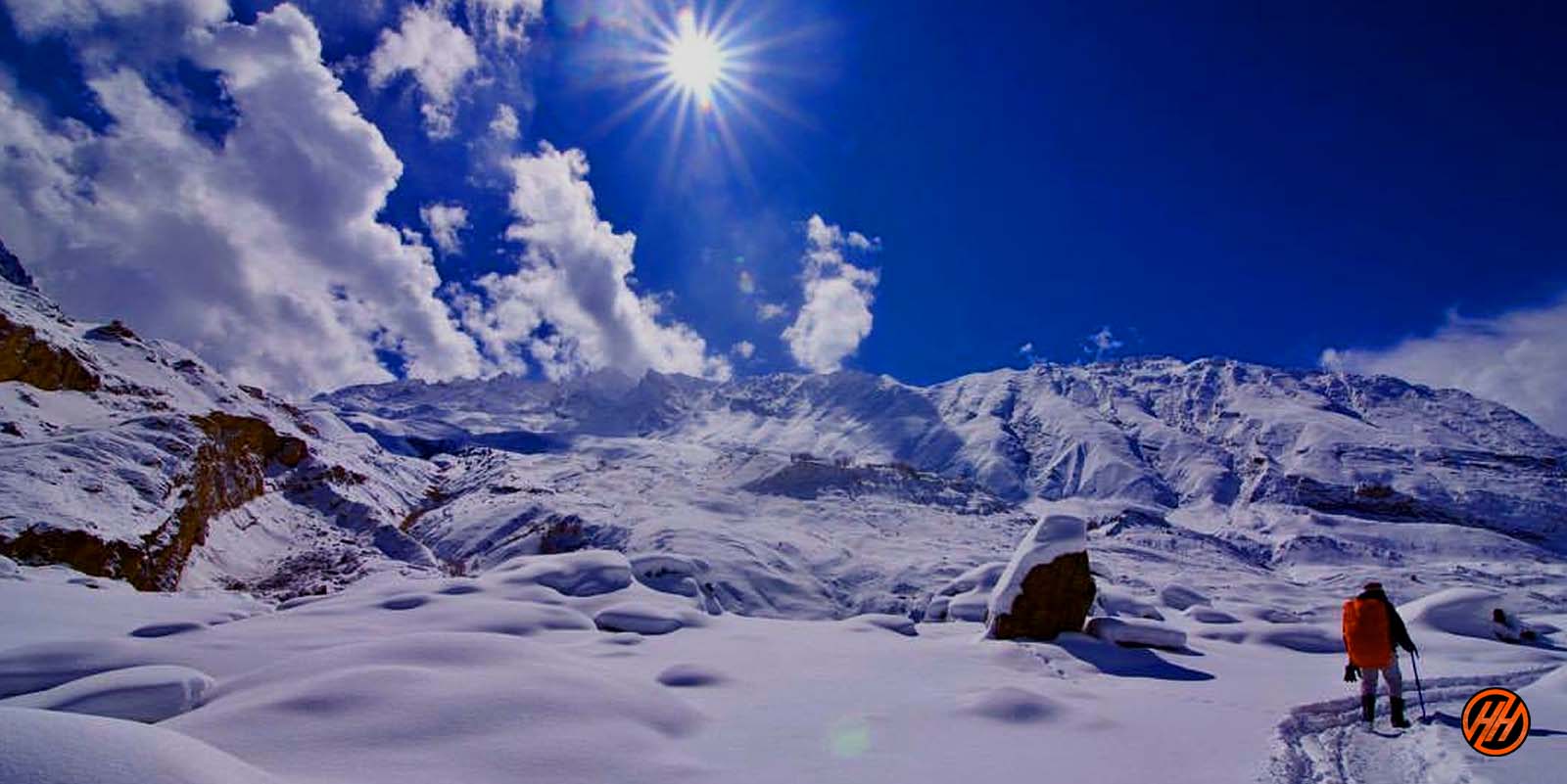
8 Best Treks in Ladakh, India
Ladakh region often known as “Little Tibet” and the “Land Beyond the Passes” is a high altitude, area of about 60,000 square kilometers and elevations ranging from 2,600 to 7,670 metres. It is sandwiched between two massive mountain systems: the Karakorams to the north and the Himalayas to the south.
Ladakh, located in the Trans-Himalayan region, is one of those popular trekking destinations that offer so much with a visible crowd of frequent trekkers. Tourism has recently gained widespread recognition as an important industry in the district due to its large-scale potential for job creation and income generation.
Leh, the capital and primary town, is not only a major base for treks and nearby monasteries, but also a fascinating destination in its own right. Buddhist monasteries, nostalgic souvenir shops, many different legendary trading posts, and warm people of Ladakh offer a great insight into native people and their way of life.
The villages of Hemis, Alchi, and These are the most popular for magnificent structures, while Stok and Shey lie beneath awe-inspiring palaces from bygone eras. The small villages, which are often sprinkled with apricot and other plantations, are home to some of the world’s great monasteries, which are nestled carefully on rocky ridges above the towns.
From the exciting and challenging treks of Chadar and Markha Valley to the calming and family-friendly treks of Sham Valley, Ladakh provides hikers with a diverse range of trekking challenges. One can tailor their trekking experience based on the elevation, destination point, or challenges they face. Ladakh, known for its old routes and passes, can serve as a gateway to different, century-old and culturally diverse vistas. The salt lake of Tso Kar and the highest alpine lake in Ladakh, Tso Moriri, are sure to excite trekkers with their scenic vistas of the Himalayas and camping destinations.
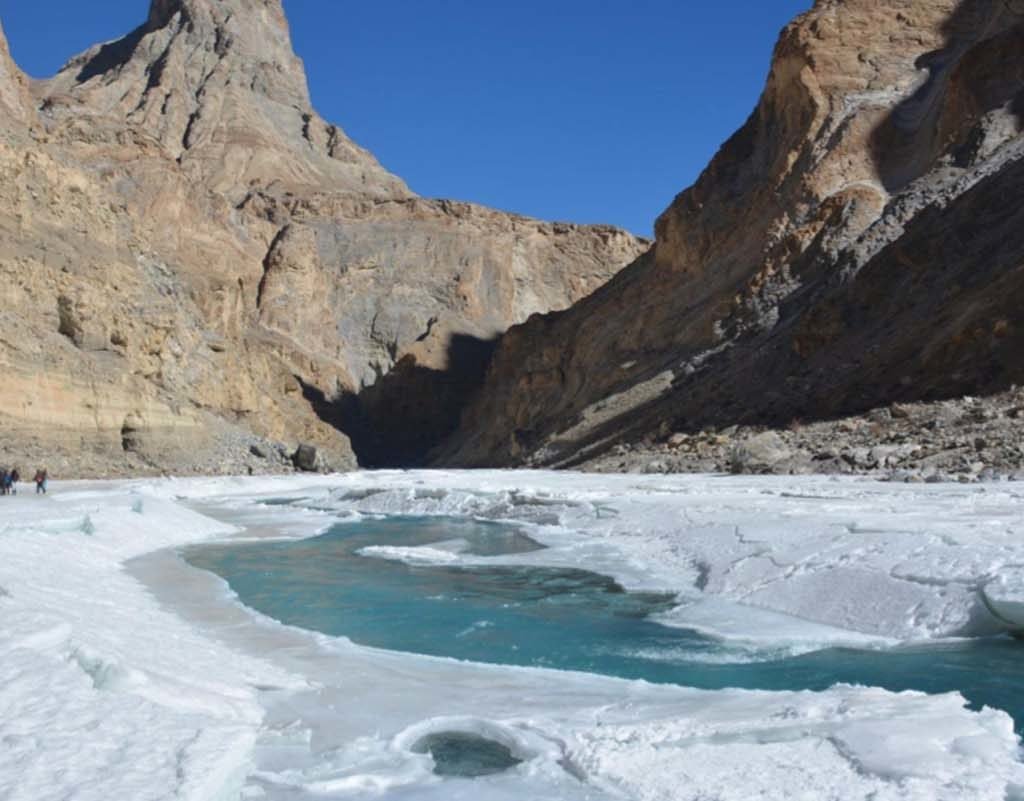
The Himalayas are famous for their breathtaking sunsets and sunrises, which, when combined with Ladakh’s ever-changing terrain and valleys such as the Nubra Valley, also known as the Valley of Flowers, only result in a tranquil satisfaction of the overall experience.
The heart of Ladakh is your Instagram’s picture-perfect reality; not only for trekkers and tourists, but also for those looking for inner-outer experience can indulge themselves in this beautiful place among the mountains.
1.Chadar Trek
The Chadar Trek, also known as the Zanskar Gorge, is a winter trail that follows the frozen Zanskar River through the Indian union territory of Ladakh. During the harsh winter months, it is traditionally the only mode of transportation in the area. The difficult trail has gained popularity among tourists as an ideal adventurous winter trek. The best time to do the Chadar trek is from January to February, when the temperature can drop to -30 to -35 degrees.
The Chadar Trek is a close-classified trek of persistence and survival, with near vertical cliff walls that can reach 600 m and the Zanskar River, a tributary of the Indus, having only 5-metre width in places. Learning to survive in harsh terrains at sub-zero temperatures, the primal thrill of sleeping in caves, pondering over scorching bonfires in freezing temperatures while trekking across a dramatic creek with frozen waterfalls on Zanskar’s frozen trail encompassed in like a “Chadar” is a dream come true for any trekker who is not afraid of challenges. With so many challenges and stressful circumstances, this difficult level trek is only recommended for experienced trekkers.
- Duration: 7 nights 8 days
- Altitude: 11,400ft.
- Trek distance: on foot 57km- by taxi 140 km
- Temperature: Winter Temperature: – Day (-5°C to -15° C) Night (-12°C to -20°C)
- Best time to visit: January-February
- Trek level: Difficult
- Trek route day by day: Leh, Shingra Koma, Tsomo Paldar, Tibb cave, Nerak camp
- Weather: Winters are covered with snow whereas summers experience higher temperatures

2.Stok Kangri Trek
Stok Kangri at a height of 6,153 metres is the highest mountain in the Stok Range of the Zanskar Mountains, a Trans-Himalayan mountain in the Ladakh region of north India. The peak is located in Hemis National Park, 12 km southwest to the head of the Stok Chu river valley in the village of Stok and around 15 km southwest of the city of Leh, the capital of Ladakh.
Stok Kangri is a popular trekking peak with deserted landscapes, high altitude and towering peaks all around. It is often climbed as a first non-technical venture into high altitude mountaineering.
The trail begins and ends in Stok, which is also home to the 14th-century Stok Monastery and its 22-meter-high seated Gautama Buddha statue. Stok Kangri’s difficulty is frequently underestimated, but the demanding trail requires acclimatization before and during the ascent, so trekkers with reliable experience and physique are encouraged to traverse this path and experience the heart-warming vistas of this trek.
- Duration: 7 nights 8 days
- Altitude: 6153m.
- Trek distance: on foot 57km- by taxi 140 km
- Temperature: Day (5°C to 10° C) Night (2°C to -3°C)
- Best time to visit: July, August
- Trek level: Difficult
- Trek route day by day: Leh, Stok Village, Chang Ma, Mankorma camp, Base camp of Stok Kangri, Stok Kangri Summit
- Weather: Winters are covered with snow whereas summers experience higher temperatures
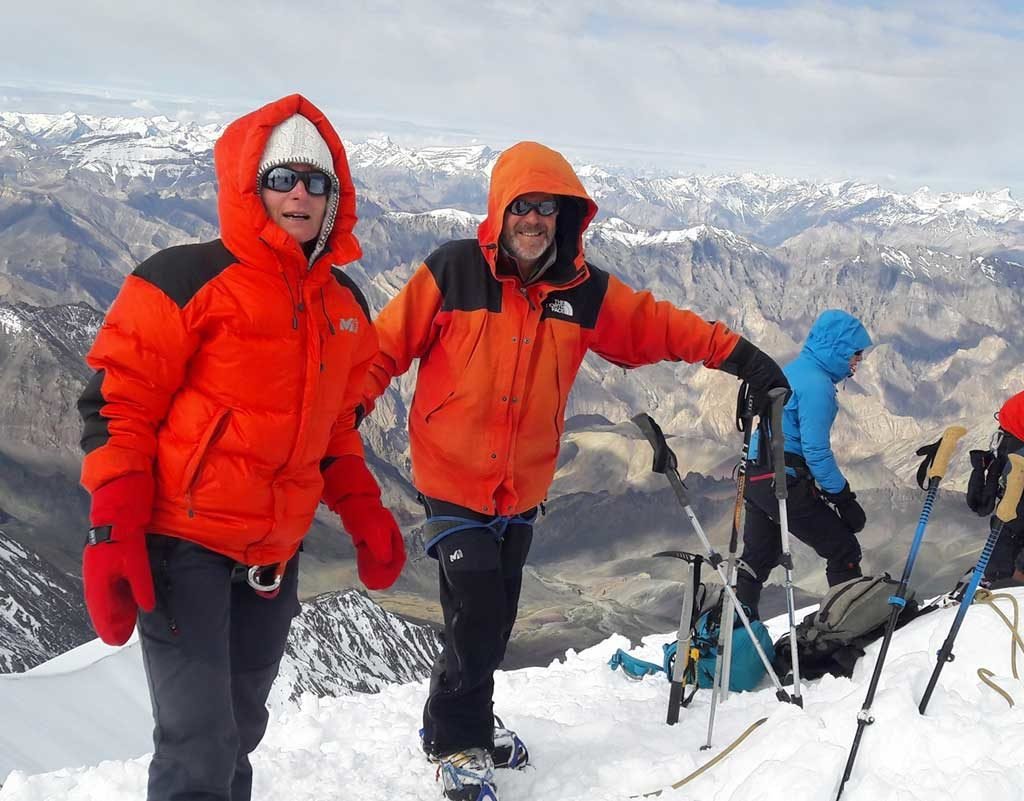
3.Markha Valley Trek
MarkhaValley is a beautiful river valley in Hemis National Park in Ladakh’s sparsely populated cold desert. The Markha Valley is a popular trekking route in Ladakh, accessible from Ganda La pass near Spituk in the west, where the trek usually starts, and Gongmaru La pass near Hemis, where it usually ends. The journey takes you through the land of fluttering mane walls, high passes, exotic wildlife, unusual compressive canyons, and authentic villages. It is a difficult trek with numerous stream crossings, steep ascents, and descents.
Majestic Kang Yatse, a 6,400m high near-perfect pyramid peak, can be found near the valley’s head, alongside the trail’s incredibly rocky canyons. The villages along the Markha valley trek, such as Rumbak, Shingo, Skyu, Sara, Markha, and Hankar, are the most charming part of the journey. The traditional gracious houses and people amidst lush green fields in the middle of Ladakh’s barren mountains are some of the fascinating experiences. Nomadic families with cattle and yaks, as well as numerous small monasteries, the most important of which is Techa gompa, a Buddhist monastery in the Markha valley, are among the trek’s highlights. Trekkers will need a high level of experience and a strong physique owing to the route’s ever-changing terrain
- Duration: 6 nights 7 days
- Altitude: 5200m.
- Trek distance: on foot 65km
- Temperature: Day (10°C to 15° C) Night (0°C to 7°C)
- Best time to visit: May, June, September, October
- Trek level: Moderate-Difficult
- Trek route day by day: Leh, Chilling, Skiu, Sara, Markha, Hankar, Nimaling, Chokdo
- Weather: Nights are cold while day temperatures are pleasant during the season
4.Rumtse To Tso Moriri Trek
The trek from Rumtse to Tso Moriri, home to Changpa nomads with their pashmina goats and yaks, is one of Ladakh’s most fabulous treks. The trail winds through the Changthang region, a plateau filled with exotic landscapes, wildlife, and one-of-a-kind lakes such as Tso Kar and Tso Moriri.
The Rumtse to Tso Moriri covers a diverse range of landscapes, including colourful mountains, massive alpine lakes, abundant wildlife, and camping among the greenery, all of which contribute to the surreal beauty of this trek. The most picturesque vista of this trek is the view of two high altitude lakes, Tso Kar salt lake and Tso Moriri, one of the largest and highest alpine lakes in Ladakh. The area’s high plateaus are home to some rare animals, including the Kyang, blue sheep, marmots, Himalayan Ibex, and snow leopards.
This trek is an adventurer’s dream, with numerous pass crossings, river crossings, and three campsites at elevations ranging from 15,000 to 16,000 feet. The altitude of the trek, as well as all of the ascents and descents, make this a difficult trek. Due to the difficulty of the trek, trekkers must maintain good physical fitness for any acclimatized requirements.
- Duration: 6 nights 7 days
- Altitude: 5450m.
- Trek distance: on foot 65km
- Temperature: Day (20°C to 30° C) Night (5°C to 10°C)
- Best time to visit: June, July, August
- Trek level: Difficult
- Trek route day by day: Rumtse, Kyamar La, Mandalchan La, Tisaling, Shibuk La, Ponganahu, Nuruchan, Kyamayuri La, Gyamar Barma, Kartse La, Yalung Nyau La, Karzok
- Weather: Nights are cold while day temperatures are pleasant during the season.
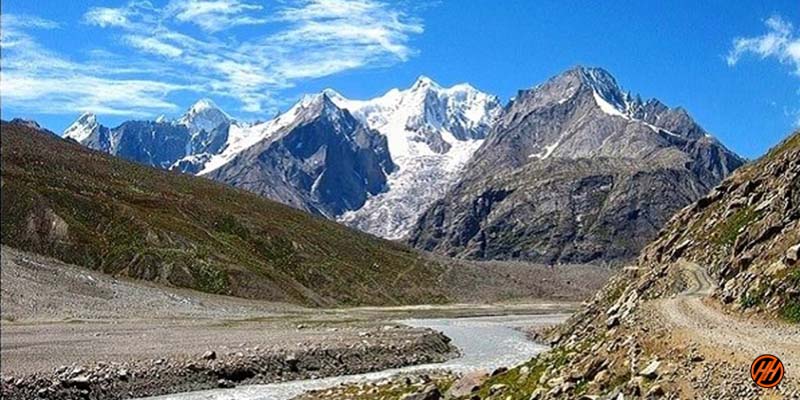
5.Sham Valley Trek
The Sham Valley, also known as the Apricot Valley, has a maximum elevation of 3900 metres and is an easy trek through the Sham area of Ladakh’s lower region. The Sham Valley Trek, also known as “The Baby Trek of Ladakh,” is a low-level trek suitable for both novice mountaineers and families. In the winter, the sham valley is home to a number of blossoming Apricot flowers and provides picturesque views of the underrated Ladakh region. The trek can be done all year and is a great way to learn about the villages and the natives’ daily lives. Sham Valley Trek, with a touch of traditional and humble living, is an ideal trek for people looking for an inner-outer journey involving great views and historic sites.
The trek begins in Likir at an elevation of 3500m and ends in Mebtak at an elevation of 3750m. The contrasting landscape and wild nature provide trekkers and hikers with numerous opportunities for natural view photography. On the way back, stop at the Alchi monastery, the most visible and largest of Ladakh’s monasteries.
The Sham Valley trek requires no prior experience; it is a beginner’s and family-friendly trek that allows you to explore a remote region and learn about Ladakh’s history. The living area and breathtaking views are heaven for nature lovers and avid hikers.
- Duration: 3 nights 4 days
- Altitude: 12,715ft.
- Trek distance:
- Temperature: Day (20°C to 30° C) Night (0°C to 10°C)
- Best time to visit: June to September
- Trek level: Easy to Moderate
- Trek route day by day: Leh, Likir, Yangthang, Chagatse La, hemis Shukpachan, Temisgam
- Weather: Nights are cold while day temperatures are pleasant during the season
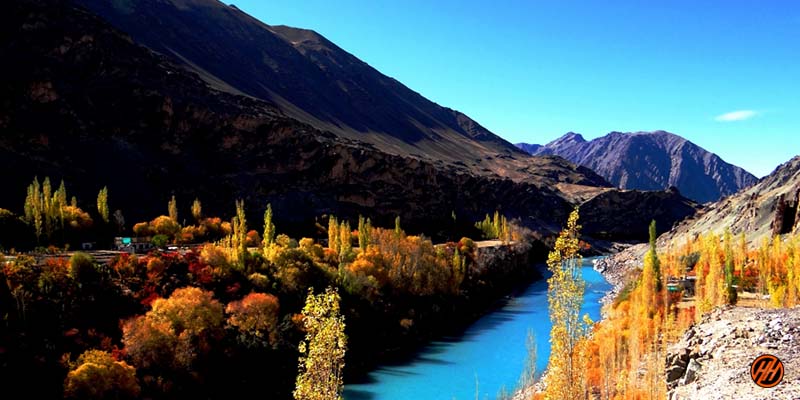
6.Parang La Trek
The Parang La Trek is a difficult high-altitude trail that connects south-eastern Ladakh to Spiti in Himachal Pradesh via the 5600-meter-high Parang La pass. This pass was popular as a traditional trade route between Spiti and Ladakh throughout the nineteenth century. Its popularity has waned over time, and it is now one of Ladhak’s most well-known and difficult trek routes.
The trail is a true Trans Himalayan trek, beginning in the Zanskar range and ending in the Great Himalayan range. The path ascends to a maximum elevation of around 5600 metres at Parang La and then follows the Pare Chu river as it flows into Tibet and then back into India.
This difficult trail contains all of the flavors of Ladakh and Spiti, such as high mountains, arid landscapes, rocky cliffs, and wide valleys dotted with patches of green, everything a trekking enthusiast would expect. It also allows you to spend the night on Tso Moriri Lake while hiking the lake’s entire length during the day. This trek is a difficult level trek with challenging terrain that requires acclimatization at certain points; therefore, trekkers with a variety of experience will have an advantage throughout this journey.
- Duration: 11 nights 12 days
- Altitude: 5600m.
- Trek distance:
- Temperature: Day (20°C to 30° C) Night (0°C to 10°C)
- Best time to visit: June to September
- Trek level: Difficult
- Trek route day by day: Manali, Kaza, Chicham, Thaltak, Borochin, Kharsa Yongma, Kapapuche, Kitpodansa, Chumik Shilde, Kiangdom
- Weather: Nights are cold while day temperatures are pleasant during the season
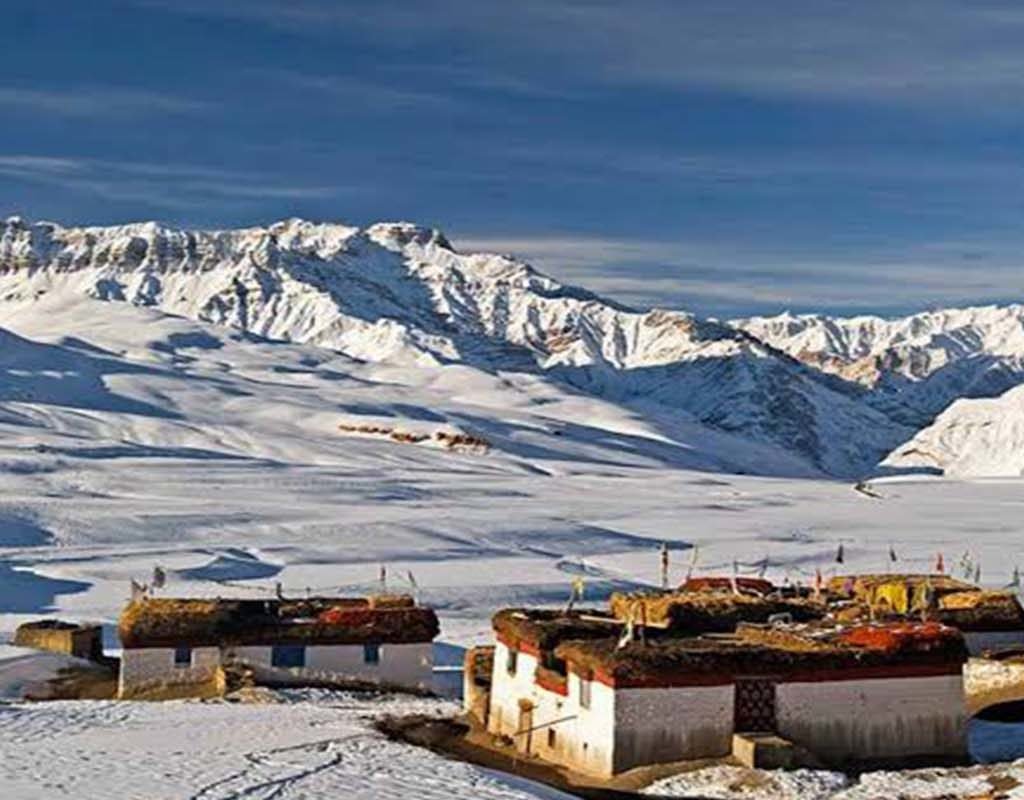
7.Padum Darcha Trek
From Padum in Zanskar to Darcha in Himachal is an easy-level trans-Himalaya trek in the Ladakh region. Darcha, which serves as a gateway to the Darcha Padum trek and a great stopover for trekkers, is a small village with many dry stone huts and tent camps perched at an altitude of 3360 m in the Lahaul and Spiti district on the Manali-Leh route.
This popular trek winds through remote villages and exquisite ancient monasteries before entering the thrilling Zanskar valley. Trekkers will be able to trek along the Tsarap River, which is followed by the Lakong River, and after crossing the Shingo La Pass, they will be able to dwell deeper into the heart of the Zanskar valley.
The Darcha Padum trek allows you to visit heritage sites such as Phuktal Monastery, which is built into the side of a hill and is a work of architectural genius. The Darcha to Padum trek is a must-visit destination due to its isolation; it only has access to the rest of the world for a few months per year, providing experience of a bygone era with untouched tranquility. The beauty of this paradise consists of scenic valleys, lilting streams, rocky canyons, and towering mountains.
- Duration: 8 nights 9 days
- Altitude: 5090m.
- Trek distance:
- Temperature: Day (20°C to 30° C) Night (5°C to 10°C)
- Best time to visit: July to September
- Trek level: Difficult
- Trek route day by day: Manali, Sissu, Chumik Nakpo, Shingo La, Lakhang, Kargiak River, Tangtze, Phuktal Gompa, Hanmu village
- Weather: Nights are cold while day temperatures are pleasant during the season

8.Nubra valley Trek
The trek persists north to the Nubra Valley, a large valley with an average elevation of 10,000 feet above sea level which also separates the Ladakh and Karakoram Ranges. It is also known as Ldumra (the Valley of Flowers) and is well-known for its forest of Hippophae shrub, also known as Leh Berry, sand dunes, and contrasting patches of greenery. This picturesque valley is extremely remote and can only be reached on foot or by the highest motorable road from Leh. The most common way to reach this valley is via the Khardung La pass, which can be reached from Leh.
Hundar village, with views of sand dunes, marks the beginning of the Nubra valley. The lush green central valley contrasts sharply with the arid landscape that surrounds it. One of the trek’s notable highlights is a ride across the spectacular dunes on a humped Bactrian camel.
Trekkers can visit ancient Buddhist monasteries such as Sumur Monastery, Disket Monastery, and Hundar Monastery. The return route over the Khardung La provides trekkers with a closer look at the area’s majestic beauty. It is a moderate-level hike that welcomes hikers of all levels of experience.
- Duration: 5 nights 6 days
- Altitude: 5400m.
- Trek distance:
- Temperature: Day (20°C to 30° C) Night (5°C to 15°C)
- Best time to visit: June to September
- Trek level: Moderate
- Trek route day by day: Leh, Hundar, Wachan, Sarathang, Muru dok, Thachungtse
- Weather: Nights are cold while day temperatures are pleasant during the season
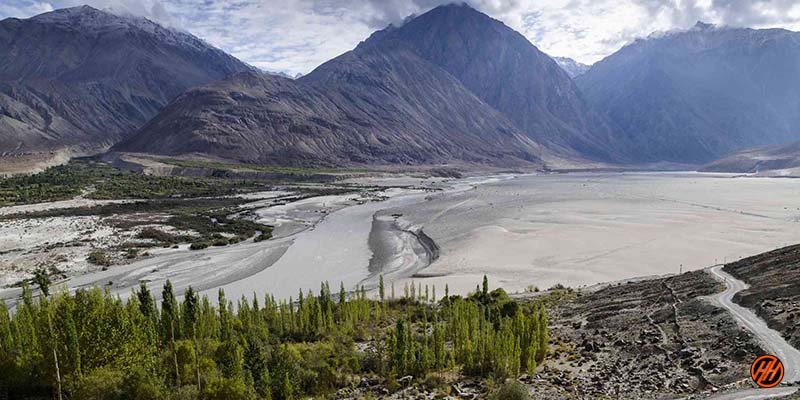

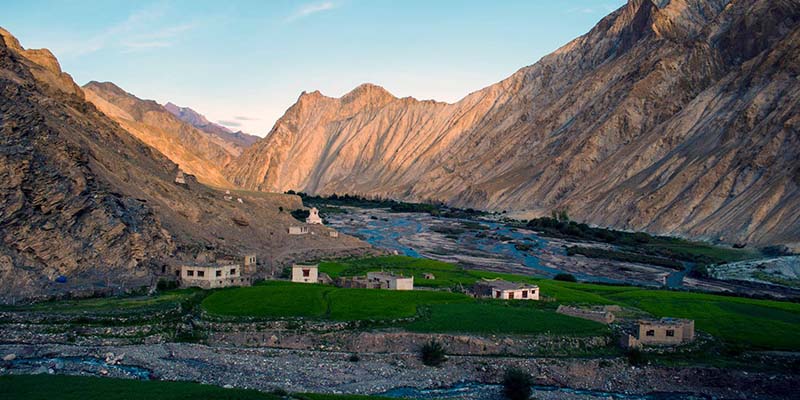
Hi , I am looking to do a 3-4 day trek between 27th Feb to 15th March. Please let me know what are my options